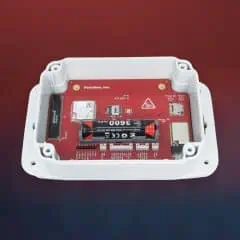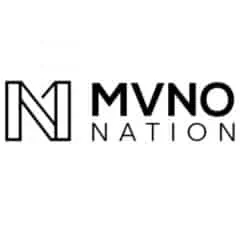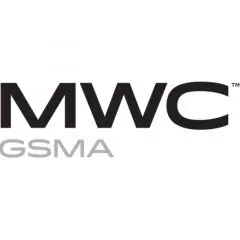Discover how eSIM technology can reduce costs and increase your business efficiency with the latest in our MVNO Academy webinar series. In this full-length webinar recording, Klaus Haertel, director of strategic alliances and channel sales at PortaOne, joins Nordic eSIM CEO Rune Holbech and PortaOne integration engineer Sergii Kirik to offer an easy-to-understand breakdown of how eSIM works – both from the telco and consumer perspective. You’ll learn how to integrate eSIM into your company’s operations and see a real-world demonstration of eSIM at work. Stick around for the Q&A session to hear detailed answers to smart questions posed by the live webinar attendees.
A successful project partnership between Nordic eSIM and PortaOne is a prime example of how programmable eSIMs are rapidly evolving within the telco and MVNO landscape: what was once a small niche is fast becoming an essential service. Not only does eSIM do away with the actual hardware of a traditional SIM card, this technology also provides the distinct advantage of being able to support multiple profiles within a single device. And, perhaps more importantly, it can be sold and activated remotely.
PortaOne and Nordic eSIM collaborated to seamlessly integrate their platforms, enabling eSIM technology within PortaBilling. The result? Vastly reduced customer onboarding time, and the ability for customers to purchase and activate a local mobile service without the need to buy a new physical SIM card or even to remove their existing SIM card. Even better, they can purchase and activate an eSIM right from their phone before they even leave home – an obvious boon for business travelers in particular.
Implementing this cutting-edge technology was no easy task, but PortaOne and Nordic eSIM were up to the challenge. Scroll down for the highlights of this discussion, or watch the full webinar below to learn about all the opportunities that have resulted from this PortaOne + Nordic eSIM partnership, and how your own MVNO can benefit from adopting eSIM via this new PortaBilling (r)evolution.

Webinar Highlights
To kick off the second edition of our PortaOne MVNO Academy, Klaus Haertel explains how eSIM has suddenly emerged as a transformative telecommunications technology. After introducing co-hosts Rune Holbech and Sergii Kirik and polling the webinar audience of telco professionals on their current eSIM attitudes, Klaus provides a brief rundown of the webinar agenda:
- An introduction to eSIM technology
- What are the benefits of an eSIM service for consumers and for telcos?
- A case study of eSIM integration for supporting MVNOs
- The role of PortaOne in eSIM deployment
- Live eSIM demonstration
- Interactive Q&A session: Common challenges & solutions
“It’s not as complex as you might think to integrate eSIM into your service offerings,” says Klaus. Read on or watch the webinar above to see for yourself.
An introduction to eSIM technology
eSIM is making life easier for everyone, right now – from telco device manufacturers to end users, says Rune Holbech of Nordic eSIM. Unlike physical SIM cards, eSIM allows account and user data to be stored directly on the device itself.
What could this mean for traditional SIM cards? In short, explains Rune, it eliminates the need entirely. eSIM also frees up space on mobile devices, allowing manufacturers to make smaller devices, increase battery efficiency, or install additional hardware that can boost a device’s performance. (Remember: while people often refer to eSIM as a virtual SIM card, there is no “eSIM card” because there is no card at all.)
What are the benefits of an eSIM service for consumers and for telcos?
eSIM allows for multiple profiles to be loaded onto a single device. For end users who like to travel, or for professionals who use their mobile phone for both personal and business purposes, for example, this makes it hassle-free to cross borders, jump back and forth between phone numbers, or even use multiple accounts from multiple providers. “They don’t have to deal with the physical SIM: they don’t have to buy them, they don’t have to keep them, they don’t have to install them,” explains Rune.
This dynamic switching could be a big advantage to MVNOs in particular, Rune adds. And for providers of all types, it means that the entire process of sales, account creation, and service delivery can be done virtually. “By moving into eSIM… you are able to build a full digital onboarding journey for your subscribers,” he says.
Rune also notes that while eSIM hasn’t yet achieved massive adoption in the consumer market, the early adopters who have tried eSIM are fast learning the advantages. As word spreads about how easy it is to use eSIM – and word is spreading fast – service providers who are already experienced in selling it, explaining it, and providing devices suited to it will have a clear advantage.
A case study of eSIM integration for supporting MVNOs
Nordic eSIM enables eSIM service for MVNOs and communication service providers. As many of their MVNO customers do not have an advanced technical understanding of eSIM, “we have tried to build something where we take care of everything around eSIM,” Rune says.
PortaOne and Nordic eSIM worked together to create a very simple onboarding process, and a lean setup that can support the dynamic of an MVNO. The step-by-step procedure allows time for technical considerations, and allows MVNOs to start small with delivering an eSIM service via a digital journey, and then grow quickly once they are comfortable with providing the service.
The role of PortaOne in eSIM deployment, and a live eSIM demonstration
In the next portion of the webinar, PortaOne integration engineer Sergii Kirik demonstrates how easy it is to onboard a new eSIM profile into PortaBilling as well as PortaOne Workflows platforms.
Watch the live walkthrough starting from minute 13 to see Sergii guide participants through the eSIM process. Sergii focuses on two workflows: the online customer onboarding process and the profile activation.
You will see how, as customers interact with the sign-up portal, the portal is “talking” to PortaBilling, which handles the capture and storage of the customer order details. Next, “that triggers a workflow in PortaOne Workflows,” explains Sergii. The system finds an available phone number, searches the inventory for an available eSIM, assigns the credentials, and creates a service account for the end user. Another step is for the PortaOne Workflows to “talk” toward the Nordic eSIM platform to prepare the eSIM profile for download.
From here, the profile activation workflow kicks in. PortaOne Workflows generates a QR code and sends it to the user via email. The user scans the code to activate their eSIM profile, and the device communicates with Nordic eSIM to download the profile and install the eSIM.
To show participants how streamlined this process is for the user, Sergii shares his screen and walks through a live activation within PortaBilling. Watch from minute 17:45 to see it in action.
Interactive Q&A: Common challenges & solutions
After the live eSIM demonstration, participants in the webinar asked specific questions about eSIM administration and integration. Here are the highlights of this Q&A. If you have more questions about eSIM or how PortaOne or Nordic eSIM can help your MVNO integrate this service, reach out to us.
Q: Does Nordic eSIM have entitlement for 1-click activation with Apple devices?
A: Nordic eSIM does not offer Apple 1-click entitlement directly, but it works with partners that do. However, Rune notes, “eSIM is a very small part of the entitlement server, and there are some approvals and certifications [that need] to be done with Apple.” It is important to understand that is not the MVNO or eSIM vendor that needs to be approved, but the MNO – so the entitlement is not needed to start an eSIM service. It will only be needed to include service to specific Apple devices, like the Apple Watch. “We are happy to help with that and to help connect you to partners that might be able to do this,” Rune says.
Q: Does PortaOne charge additional fees for MVNOs?
A: There are no additional PortaBilling fees for MVNOs. “Our platform is an unlimited license, meaning all of the modules, all of the capabilities that PortaBilling brings, are included,” says Klaus. “We do not charge extra for MVNO piece of the puzzle, as it is all in the same platform.” If your MVNO is interested in using PortaOne Workflows, that additional service will involve some extra costs. “But not all of you may need that,” he notes.
Q: Is it possible to use a 1-click install process for eSIM instead of a QR code?
A: Yes, there are more ways of installing eSIM than scanning the QR code. A user can manually type in the actual activation code, though those are long with many strange characters and that could be difficult and tedious. And yes, there is that 1-click style service as well, available via some third-party applications, including an Apple entitlement that enables one click on Apple Watch. While Nordic eSIM does not offer the 1-click service directly, they work with partners that do. Note that eSIM is only a very small part of the Apple service, and there are some MNO approvals and certifications that need to be done with Apple. Nordic eSIM can assist with the process and connect you to the right partners.
Q: How do you make money with eSIM?
A: “eSIM as a technology is not that different from physical SIM, says Klaus. “What it allows you to do is fully digitalize your offering to the mobile subscriber, meaning you can design a fully digital customer journey and therefore steal away some customers from MNOs.” And once you have identified a niche that is underserved – students, business travelers, IoT applications like vehicle tracking, whatever it is – eSIM can make it easier to create value for those subscribers. Mobile markets differ around the world and across sectors, so it is impossible to give an umbrella to the question of how to best leverage eSIM in your niche and region, in general, all of those edges “will translate to you turning a profit,” he notes.
Q: How do you switch between different SIM cards / eSIM profiles?
A: This will be very dependent on the device you are using, including whether it is Android or Apple, and what model – this is an important training consideration for your sales staff or help centers when assisting customers. The hosts share that they have personally discovered the process of adding, switching, and deleting eSIM to be very intuitive even on the iPhone 11, which is a few years old. “You can assign various contacts or data connections to use whichever eSIM you have installed, and you can certainly have multiple eSIM profiles installed at the same time and switch between them.”
Q: Does PortaOne offer a white-label option?
A: Yes. The PortaBilling platform is fully white-labeled, meaning you can integrate every part of the customer experience into your own branding. It is also very flexible, and you can also have as many “layers” (or as many resellers and sub-resellers) as you wish. “It’s very flexible in that regard,” says Klaus. If you are interested in learning more about PortaBililng and other PortaOne white-label platforms, reach out to us.
Q: Is the Nordic eSIM platform sold as a white label?
A: The Nordic eSIM platform is an internal tool and is not generally seen by subscribers, so it does not need to be white label. “If you noticed, in the activation code there was the web address of the platform, and there we have chosen ‘smdpplus.net’ which is a neutral name that does not indicate the Nordic eSIM platform,” explains Rune.
Q: If a customer’s phone is lost, can we block the eSIM from the PortaOne portal or do we need to contact the operator?
A: Yes, you can, with the right workflow. “In production deployments, we typically integrate more flows than I showed you here today,” explains Sergii. There is a workflow that will block a line in PortaBilling if a phone is stolen or there is some misuse or similar. “It’s just a matter of integration: and in this way, it will be completely automated and you won’t have to talk to the MNO,” Sergii adds.
Q: How do you onboard a customer if they do not have a computer? This can happen a lot in the regions of Africa our company serves.
A: “A computer is not necessary to sign up for the mobile service. So any mobile service that a subscriber might see in, say, Africa, they can sign up using their mobile phone,” explains Klaus. “The mobile phone needs to have a WiFi or some kind of connection to download the eSIM profile but other than that no computer is necessary.”
There are other options to resolve this challenge, too, Rune adds: “In the activation email, you saw an activation code. So a user could copy that code into the field manually, and therefore stay on the phone. We also often see point-of-sale systems that print the QR code on a small receipt for users to scan.”
Q: We are an IoT provider that wanted to use eSIM, but our MNO forced us to stay with physical SIM cards. Why are MNOs reluctant to use eSIM?
A: “MNOs are not super fond of eSIM – and to some extent that’s understandable,” says Rune. “It poses an easier way to change between MNOs, especially in the M2M/IoT sector. If they can get you to put in a SIM card into a device that is hard to access later, so it sits there for 10 or 15 years, you won’t be changing your SIM.” And that benefits the MNO.
But eSIM is inevitable and change is coming, says Rune. “There are more and more MNOs that are opening up, and I think you should go and use some of those.” As more MVNOs choose MNOs that are open to eSIM, that will apply pressure on the rest to embrace the service.
The new SGP.32 eSIM IoT specification will also change the landscape. “In simple terms it utilizes the consumer eSIM platform and you then connect to the platform using your device,” explains Rune. “Then you download the profile and that makes it all a little bit more interoperable.”
Q: Does PortaBilling work in real time or does it use CDRs?
PortaBilling is indeed a real-time system. “Everything that happens on the platform is done in real-time,” says Klaus. “We support Radius and Diameter as the main real-time protocols. But, of course, we also do support CDRs, so you can always use our xDR Mediator to import CDRs for a postpaid type of service.” For more on the PortaOne xDR Mediator, browse through our CDR in a Nutshell video tutorial playlist.
Q: Are Android and iOS allowing users to directly install, edit, or delete eSIMs from an app?
A: Yes, says Rune. “The operator can integrate the opportunity to download eSIM via an app, and the application will then interact with the API of the device. For example, using an iPhone, it might take the user automatically into the iPhone eSIM download menu. So yes, there are features you could implement in a custom app to have in-app eSIM functionality.”
Q: How can an MVNO measure the ARPU in an eSIM environment?
A: For eSIM services, explains Klaus, PortaBilling will calculate the ARPU, or “average revenue per user,” the same way it does for physical SIM-based services.




















